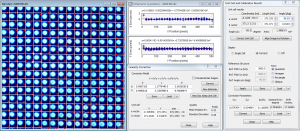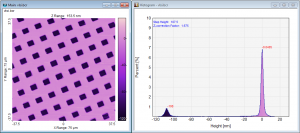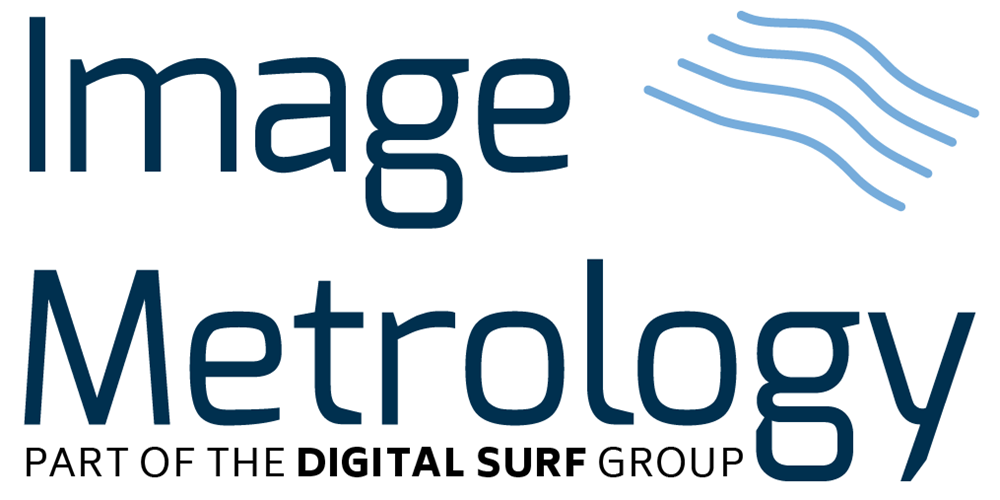The Calibration Module automatically evaluates critical dimensions and non-linearity from images of step heights and 2D calibration gratings according to ISO standards at unsurpassed precision and calculates and applies correction parameters for microscopes and recorded images.
2D pitch measurements and scanner calibration

AFM image of a Si/SiO calibration standard with a nominal pitch of 0.4µm. This standard is used for lateral calibration of microscopes. The picture shows how the lattice constants and linearity has been calculated and presented in SPIP™.
The unit cell detection features in SPIP™ automatically calculate the unit cell in images of a 2D calibration grid with unsurpassed accuracy. Advanced sub-pixel Fourier and correlation algorithms ensure the highest accuracy. In addition, SPIP™ automatically evaluates the linearity in the image, thus revealing any non-linearity in the microscope.
When evaluating images of reference structures where the true unit cell of the calibration grid is known SPIP™ can calculate correction parameters. These can be saved and subsequently used to correct other images – or in some cases used for adjusting the actual microscope.
SPIP™ not only offers calibration using artificial calibration grids but can for example also use the hexagonal structure of graphite. This is useful in for example STM images at high resolution.
Step height measurement and calibration

AFM image of a calibration standard from VLSI Standards Inc. with a nominal pitch of 10µm. This standard is used for lateral calibration of microscopes, but also as height reference, as shown. The pattern is fabricated in silicon dioxide.
SPIP™ offers two methods for measuring step height structures, one following the ISO5436 profile method, the other being a histogram based method with optional correlation averaging enhancement.
Together these methods provide the complete toolbox for calibrating SPM’s and similar instruments and for characterizing step height structures at metrological levels.
For step height measurements and calibration at the highest level the ISO 5436 method in SPIP™ is a convenient tool, which also can measure sidewall angles and widths in addition to the height of step height structures. The function can analyze a single profile, or all the scan lines in an image- even with multiple steps!
Many calibration samples consist of grid or checker board pattern for XY calibration. Often these samples also have a certified height/depth of the structures. The histogram method is very fast and easy for measuring this height or depth.
The calibration methods in SPIP™ are used by the world’s leading metrology institutes for calibration of gratings and SPM instruments and the ISO standard for SPM calibration, ISO 11952:2014, is largely based on the capabilities of SPIP™.



